This article was co-authored by Chad Zani. Chad Zani is the Director of Franchising at Detail Garage, an automotive detailing company with locations around the U.S. and Sweden. Chad is based in the Los Angeles, California area and uses his passion for auto detailing to teach others how to do so as he grows his company nationwide.
This article has been viewed 2,028,711 times.
If your once-crystal clear headlights now look like they're covered in wax paper, it's safer to learn to clean and buff them up yourself to maintain the life of the vehicle. Learning to inspect the headlights to figure out the degree of damage will help you learn how to approach the task. Then you can learn to abrade the wear and buff them to a new shine.
Steps
Getting Started
-
1Inspect the headlights to see what approach makes most sense. If you've noticed that your headlights are hazier or not as crisp as they once were, examine them in daylight, both on and off. It's important to figure out how bad the damage is to know which cleaning methods will be the most effective, whether you need to get the headlights examined professionally, or whether the headlights might need replaced. Look for major abrasions and scratches that might be signs of more serious issues.
-
2Wash the headlights with regular car soap. Regular road grit and grime can make your headlights look dirty and hazy to a degree that can make a more accurate diagnosis difficult. Before you start looking for specific problems, just give your car a wash with regular warm water and car wash soap. Wipe down the headlights and let them dry thoroughly. Examine them clean to look for specific issues.Advertisement
-
3Look for hazing. Haziness will occur when all of the hard coat has worn off the headlights and the soft polycarbonate is exposed, beginning to absorb scratches that creates hazing. The lens will soon be covered in a rough dark yellow crusted surface.[1]
- If this seems to be the problem, doing a cheap quick clean will be an effective way of slowing the degeneration of the headlights, but a more comprehensive clean may be called for.
-
4Look for yellowing. This occurs when all of the hard coat is beginning to thin out and lose adhesion to the polycarbonate lens. The UV wavelength spectrum creates a new repeating unit in the carbonic chain which absorbs blue light, and results in a yellowish appearance.
- If you notice yellowish coloring on the headlights, you need to opt for a more comprehensive clean, using Rain-X or some polishing compound to clean them up and correct the damage. A thin layer of transmission fluid can temporarily clear them up as well.
-
5Look for peeling and cracks. When the hard coat begins to deteriorate, you will notice spotting in certain areas such as the upper region or the corners. The hard coat can appear to flake off or peeling off. Eventually, you'll see cracks deep into the lens, which means the headlights will need to be resurfaced by a professional.
- If this is the case, you might need to replace your headlights or have them resurfaced, which might end up costing more. In the meantime, clean them up as best you can using a quick method and start pricing new headlights.
-
6Have glass headlights examined by the pros. Most headlights are plastic and will exhibit the symptoms described above. Glass headlights, as are found on classic cars and older models, are more complicated and are best examined by professional body technicians. If your glass headlights are wearing out, take them in and have them checked.
Sanding the Headlights
-
1Get a few grades of wet/dry sandpaper. To start with, you're going to buff out the headlights, using an increasingly-fine series of wet/dry sandpaper. 3M is usually the best brand for the job, and you typically want to have at least one coarser grade (1500 or so) and a finer grade to finish abrading the headlight (around 2000). If you want to start with coarser sandpaper, that's up to you.[2]
-
2Tape off the headlights. Any time you're using sandpaper around the car, you want to make sure you don't get too vigorous and scratch the paint. For this reason, it's usually a good idea to use some painter's tape around the edge, where the lights meet the painted part of the car, to avoid scratching up the paint. This isn't necessary, but it's worth taking the extra few minutes to protect your paint job.[3]
- Before you get started sanding, it's usually a good idea to wipe down the headlights once more, using clean paper towels and a bit of rubbing alcohol. This should dry quickly and you'll be ready to go.
-
3Wet the sandpaper and start sanding. Using a water spray bottle or a small bucket, wet sand the headlights thoroughly with your coarser grit sandpaper. Use even pressure and sand away at the headlight, until you have an even, dull finish.[4]
- If the factory coating begins to come off, you will notice a hazy "line" begin to appear and change shape as it is sanded off. It is generally best to sand the coating completely off.
-
4Switch to the finer grade of sandpaper. After going over the headlights with your coarse paper, switch to a sandpaper with a higher grit-count and repeat the process until the finish changes from dull to kind of "satiny."
- On headlights with an interior texture where you cannot necessarily see the bulb, you can usually stop at 1500 grit paper. The headlights will look hazy, but even and not yellow.
Polishing the Headlights
-
1Choose a buffing compound. Once you've sanded down the headlights and worked out the hazing, it's time to switch to a buffing compound of some kind. Lots of different choices are available, including McGuire’s, M105, and 3M compound. Visit the auto parts store for a variety of options. Aluminum polishing compounds are the best bet to get the headlights into good shape. Non-abrasive bathroom acrylic tub and sink cleaner is designed for plastics, works well and may already be under your sink.
- If you're looking for a cheap option, plain blue toothpaste is a common substitute. Use plain blue toothpaste, not anything with peroxide, whitening agent, or other additives.
-
2Add buffing compound to a clean microfiber cloth. Take a clean towel, apply a quarter-sized glob of buffing compound, a pick a small area of the headlight to focus on, say 4 x 4 inches (10 x 10 centimeters). Work it in a circular motion, polishing repeatedly and uniformly in your little square. It should take less than five minutes or so for the section to start looking clearer. Once you've buffed a square, move on to the next one.
- If you want to use a hand drill with a buffing kit, you can apply buffing compound directly to a foam pad that will spin on the drill, then buff the headlights at a low RPM. Using gentle pressure, slowly ease the RPMs up, moving the pad uniformly around the headlight. Go slowly, about an inch a second. This will go much faster than polishing by hand.
-
3Continue buffing until your headlights look clear. It'll take some elbow grease, because you may want to add as many as three coats of buffing compound to get your headlights like you want them. Go until you're satisfied with the clarity and the sharpness of the light. You can test your headlights by shining them against the wall of the garage, or some other flat surface.
-
4Consider having plastic adhesion added. If you want to really seal your headlights and keep them in good shape, you might consider having a local auto body shop mask and spray the headlights with a plastic adhesion promoter, like Bulldog. That plus a few coats of automotive clear-coat helps to extend the life of headlights considerably, and should only cost between $20-50, depending on the shop. A less expensive option is acrylic floor wax. Apply a coat and let dry. Multiple coats can be applied for a more durable finish and it can be re-applied as necessary.
\
Expert Q&A
-
QuestionWhy do my headlights look yellow?
 Chad ZaniChad Zani is the Director of Franchising at Detail Garage, an automotive detailing company with locations around the U.S. and Sweden. Chad is based in the Los Angeles, California area and uses his passion for auto detailing to teach others how to do so as he grows his company nationwide.
Chad ZaniChad Zani is the Director of Franchising at Detail Garage, an automotive detailing company with locations around the U.S. and Sweden. Chad is based in the Los Angeles, California area and uses his passion for auto detailing to teach others how to do so as he grows his company nationwide.
Auto Detailing Expert The reason the headlight looks yellow that the plastic is broken down, which is generally caused by the sun.
The reason the headlight looks yellow that the plastic is broken down, which is generally caused by the sun. -
QuestionHow do I use household items to clean my headlights?
 Chad ZaniChad Zani is the Director of Franchising at Detail Garage, an automotive detailing company with locations around the U.S. and Sweden. Chad is based in the Los Angeles, California area and uses his passion for auto detailing to teach others how to do so as he grows his company nationwide.
Chad ZaniChad Zani is the Director of Franchising at Detail Garage, an automotive detailing company with locations around the U.S. and Sweden. Chad is based in the Los Angeles, California area and uses his passion for auto detailing to teach others how to do so as he grows his company nationwide.
Auto Detailing Expert Household remedies can help temporarily, but they won't fix the problem. For instance, if you rub petroleum jelly on your headlights, they will look better for as long as the petroleum jelly hangs around. Similarly, any kind of oil-based product, like olive oil, will make a dull headlamp look better, but only momentarily.
Household remedies can help temporarily, but they won't fix the problem. For instance, if you rub petroleum jelly on your headlights, they will look better for as long as the petroleum jelly hangs around. Similarly, any kind of oil-based product, like olive oil, will make a dull headlamp look better, but only momentarily. -
QuestionHow can I restore my headlights for cheap?
 Chad ZaniChad Zani is the Director of Franchising at Detail Garage, an automotive detailing company with locations around the U.S. and Sweden. Chad is based in the Los Angeles, California area and uses his passion for auto detailing to teach others how to do so as he grows his company nationwide.
Chad ZaniChad Zani is the Director of Franchising at Detail Garage, an automotive detailing company with locations around the U.S. and Sweden. Chad is based in the Los Angeles, California area and uses his passion for auto detailing to teach others how to do so as he grows his company nationwide.
Auto Detailing Expert Use headlight restoring product, which you can get for around $17. Use that with a cordless drill and a microfiber pad to make your headlights look fantastic.
Use headlight restoring product, which you can get for around $17. Use that with a cordless drill and a microfiber pad to make your headlights look fantastic.
Warnings
- If you choose this method of refinishing / cleaning your headlights, keep in mind that you will have to reapply this method over and over because you removed what was left of the protective layer. You must maintain the headlight lenses every month or so. You can avoid the monthly extra maintenance by applying a high temperature resistant UV coating to the headlight lens. Also keep in mind that anytime you're using abrasives like toothpaste or sandpaper that you're going to strip away the UV layer which will soon turn your headlight yellowish,you may want to look into a UV safe deoxidizer, saves time as well.[5]⧼thumbs_response⧽
References
- ↑ https://www.popularmechanics.com/cars/how-to/a10346/how-to-make-your-headlights-shine-like-new-16649941/
- ↑ https://www.familyhandyman.com/automotive/car-maintenance/restore-and-polish-auto-headlights/
- ↑ https://www.popularmechanics.com/cars/how-to/a10346/how-to-make-your-headlights-shine-like-new-16649941/
- ↑ https://www.familyhandyman.com/automotive/car-maintenance/restore-and-polish-auto-headlights/
- ↑ https://www.theartofcleanliness.com/automotive/how-to-clean-headlights-restore-them/
About This Article
If your headlights are looking hazy or fogged over, you can clean them using a few simple supplies to get them looking new again. First, wash your headlights with soapy water and let them dry. Then, apply painter’s tape around the perimeter of each headlight so you don’t accidentally damage the surrounding paint. For a quick fix, apply toothpaste to a damp cloth and buff the toothpaste into each headlight for about 5 minutes. Toothpaste is mildly abrasive, and it can help remove any buildup on your headlights. Rinse off each headlight with water and let them air dry. You can also try using baking soda and vinegar. Mix 2 parts white vinegar with 1 part baking soda, and rub the mixture into each headlight with a cloth for a few minutes. Rinse your headlights with water and repeat if needed. For really hazy headlights, try wet sanding them. First, wet the headlights and some 1000-grit sandpaper with water. Then, sand each headlight using horizontal strokes for 5 to 10 minutes, keeping the sandpaper wet at all times. Repeat with 2000-grit and then 3000-grit sandpaper, changing the direction you sand in each time. Finally, polish and wax your headlights to really make them shine. If you want to learn how to protect your headlights with plastic adhesion, keep reading the article!
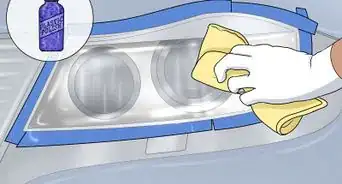
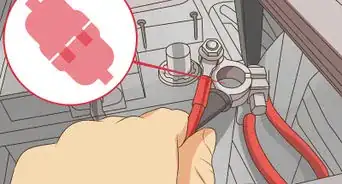
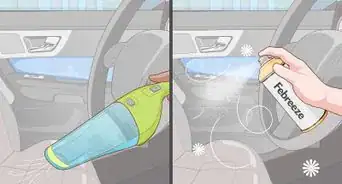
-Step-13-Version-2.webp)

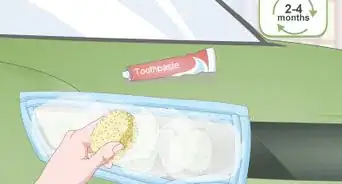
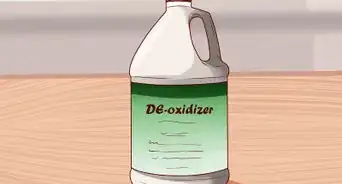
-Step-27.webp)
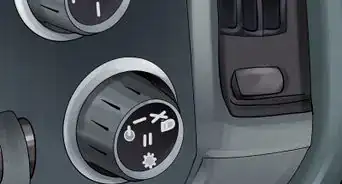
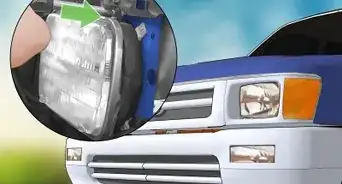
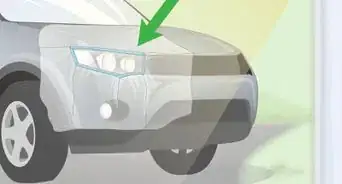










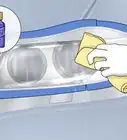
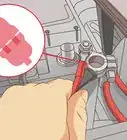

-Step-13-Version-2.webp)


































